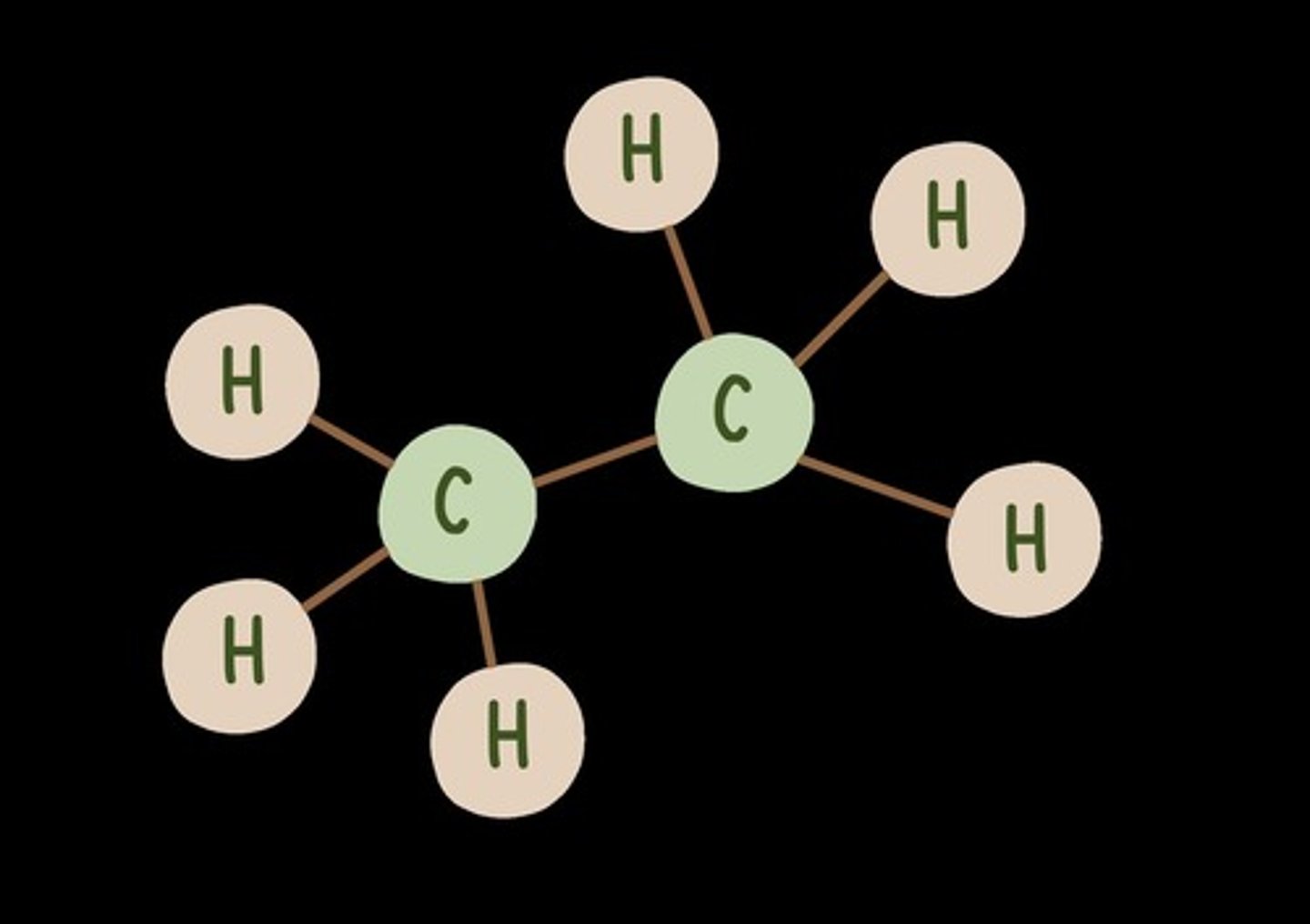CAIE IGCSE Chemistry: Stoichiometry and Key Concepts
1/26
There's no tags or description
Looks like no tags are added yet.
Name | Mastery | Learn | Test | Matching | Spaced |
|---|
No study sessions yet.
27 Terms
C2H6
Ethane

Empirical formula
Defines the simplest whole number ratio of atoms of each element in a compound.
Relative formula mass (Mr)
The sum of the relative atomic masses of atoms in a formula unit. Used for giant ionic structures.
Mass of magnesium needed to form 12g of magnesium oxide
1. Find the Mr of magnesium: 24; 2. Find the Mr of magnesium oxide: (Ar of Mg is 24 and Ar of oxygen is 16); 3. Find the mol of magnesium oxide: mass of MgO ÷ Mr of MgO; 12 ÷ 40= 0.3; 4. The moles of magnesium is also 0.3 since the balancing numbers of Mg and MgO are the same; 5. Calculate the mass of magnesium: Mr of Mg x mol of Mg; 24 x 0.3 = 7.2g.
Concentration
The concentration of a substance is the amount of solute dissolved in a measured volume of solution. The concentration can be measured in g/dm3 or mol/dm3.
Mole
The mole is the unit for amount of any substance, containing the same number of particles as there are atoms in exactly 12 g of carbon-12 (1 mole= 6.02 x 10^23 particles).
Equation relating moles with Avogadro constant
Number of particles = moles x Avogadro's constant.
Equation relating amount of substance, mass and molar mass
Mass of a substance (in g) = Moles (mol) x Molar mass of substance(g/mol).
Molar mass
The molar mass is the mass of 1 mole of the substance. It is the same as the Ar / Mr of the substance but the molar mass has a unit: g/mol.
Molar volume of gas at RTP
24 dm3.
Equation linking molar volume at RTP and moles
Volume of gas at RTP (dm3) = moles x 24dm3. Volume of gas at RTP (cm3) = moles x 24000cm3.
Volume of gas at RTP (dm3)
moles x 24dm3
Volume of gas at RTP (cm3)
moles x 24000cm3
Limiting reagent
The reactant that is completely used up first, preventing the reaction continuing and determines the amount of product that can form.
Equation linking concentration, volume and amount of substance
Concentration (in mol/dm3) : Amount of substance (mol) / Volume (dm3)
Conversion between mol/dm3 and g/dm3
mol/dm3 -> g/dm3 multiply by the Mr; g/dm3 -> mol/dm3 divide by the Mr
Theoretical yield
The maximum amount of product that would be collected under perfect reaction conditions.
Reasons for not obtaining theoretical yield
1. Reaction may not go to completion because it is reversible 2. Some of the product may be lost when it is separated from the reaction mixture 3. Some of the reactants may react in ways different to the expected reaction.
Percentage yield calculation
Percentage yield = (Actual yield / Theoretical yield) x 100
Percentage composition calculation
Percentage mass = (Total Ar of the element / Mr of the compound) x 100
Molar volume at RTP
The volume occupied by one mole of molecules of any gas at room temperature and pressure (RTP). The molar volume at RTP is 24 dm3.
Mole
The unit for amount of substance. The symbol for the unit mole is mol.
Molecular formula
The actual ratio of atoms of each element present in a compound.
Relative atomic mass, Ar
The average mass of an element, Ar, as the average mass of the isotopes of an element compared to 1/12th of the mass of an atom of carbon-12.
Relative formula mass, Mr
The sum of the relative atomic masses in an ionic compound.
Relative molecular mass, Mr
The sum of the relative atomic masses in a molecule.
Spectator ions
Ions that are present on both sides of an equations so remain unchanged and can be cancelled out to leave the ionic equation.